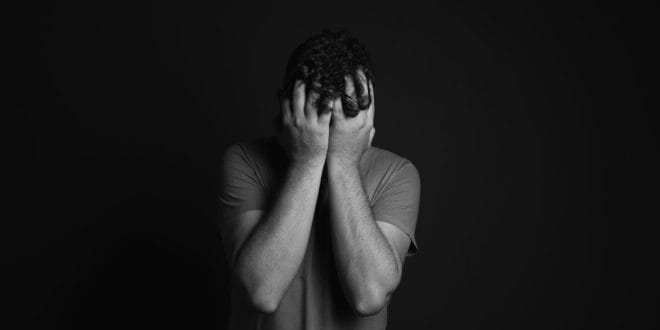Depression is a common mental health condition that affects millions of people worldwide. It’s not just about feeling sad or down for a few days; it’s a complex condition that can significantly impact your daily life. As a psychologist, I have seen how understanding the different types of depression can help individuals and their loved ones better manage and seek appropriate treatment. In this article, we’ll explore some of the most common types of depression, including Major Depressive Disorder, Persistent Depressive Disorder, Bipolar Disorder, Seasonal Affective Disorder, Postpartum Depression, and Atypical Depression.
Major Depressive Disorder (MDD)
What is it?
Major Depressive Disorder, often referred to as clinical depression, is characterized by a persistent feeling of sadness and loss of interest in activities you once enjoyed. It can affect your ability to work, sleep, eat, and enjoy life.
Symptoms:
- Persistent sad or empty mood
- Loss of interest in hobbies and activities
- Changes in appetite or weight
- Trouble sleeping or sleeping too much
- Fatigue or lack of energy
- Feelings of worthlessness or guilt
- Difficulty concentrating or making decisions
- Thoughts of death or suicide
Treatment:
MDD is typically treated with a combination of medication and psychotherapy. Antidepressants can help balance chemicals in your brain, while therapy can provide you with tools to manage your symptoms.
Persistent Depressive Disorder (PDD)
What is it?
Persistent Depressive Disorder, also known as dysthymia, is a chronic form of depression. The symptoms are less severe than those of MDD but last much longer, often for years.
Symptoms:
- Feeling sad or down most of the time
- Poor appetite or overeating
- Trouble sleeping or sleeping too much
- Low energy or fatigue
- Low self-esteem
- Difficulty concentrating or making decisions
- Feelings of hopelessness
Treatment:
Like MDD, PDD is treated with medication and psychotherapy. Because it’s a long-term condition, ongoing treatment may be necessary to manage symptoms.
Bipolar Disorder
What is it?
Bipolar Disorder is characterized by mood swings that include emotional highs (mania or hypomania) and lows (depression). It’s different from other types of depression because of these mood swings.
Symptoms:
- During depressive episodes: Symptoms similar to MDD
- During manic episodes: Increased energy, euphoria, reduced need for sleep, impulsive behavior
Treatment:
Treatment often involves mood stabilizers, antipsychotic medications, and psychotherapy. It’s crucial to manage both the depressive and manic phases of the disorder.
Seasonal Affective Disorder (SAD)
What is it?
Seasonal Affective Disorder is a type of depression that occurs at certain times of the year, usually in the winter when there’s less natural sunlight.
Symptoms:
- Feeling depressed most of the day, nearly every day
- Losing interest in activities you once enjoyed
- Low energy
- Changes in sleep patterns
- Changes in appetite or weight
- Feeling sluggish or agitated
- Difficulty concentrating
- Feelings of hopelessness or worthlessness
Treatment:
Light therapy, where you sit in front of a special light box, can be very effective. Other treatments include medication and psychotherapy.
Postpartum Depression
What is it?
Postpartum Depression occurs after childbirth and can affect both new mothers and fathers. It’s more severe than the “baby blues” and can interfere with your ability to care for your baby and handle other daily tasks.
Symptoms:
- Severe mood swings
- Excessive crying
- Difficulty bonding with your baby
- Withdrawing from family and friends
- Loss of appetite or eating much more than usual
- Insomnia or sleeping too much
- Overwhelming fatigue
- Feelings of worthlessness, shame, guilt, or inadequacy
- Thoughts of harming yourself or your baby
Treatment:
Treatment often includes counseling, medication, and support groups. Early intervention is crucial for the well-being of both the parent and the baby.
Atypical Depression
What is it?
Atypical Depression is a subtype of Major Depressive Disorder with specific features such as mood reactivity, where your mood can improve in response to positive events.
Symptoms:
- Mood reactivity
- Increased appetite or weight gain
- Sleeping excessively
- Heavy feeling in arms or legs
- Sensitivity to rejection
Treatment:
Treatment may involve a combination of antidepressants and psychotherapy. Monoamine oxidase inhibitors (MAOIs) are sometimes used, but they require dietary restrictions.
Understanding the different types of depression can help you recognize the symptoms and seek appropriate treatment. If you or someone you know is struggling with depression, it’s important to reach out to a healthcare professional. Remember, depression is a treatable condition, and with the right support, you can manage your symptoms and lead a fulfilling life.
 Lifeved The Keys to a Better
Lifeved The Keys to a Better



 by
by